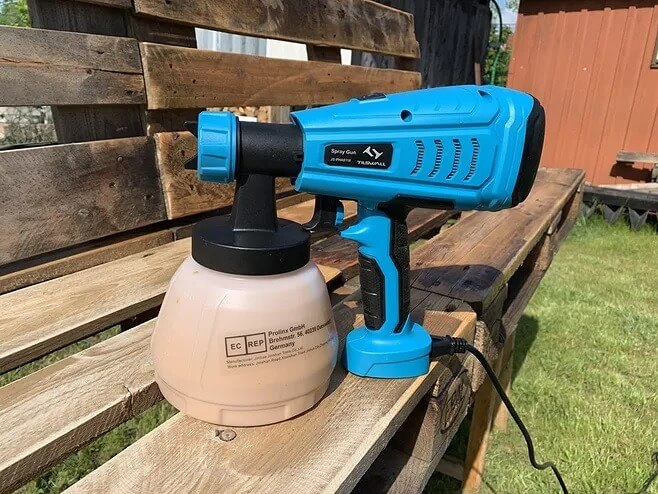When painting a car, many wonders if they can use an electric paint spray gun instead of a specialized one. At the same time, it may seem like a cost-effective solution, but using a hose sprayer to paint a car can have serious consequences. This article will explore why using a house sprayer to paint a car is not recommended and what you should consider when choosing a sprayer.
Why You Shouldn’t Use a House Sprayer to Paint a Car
The main reason why using a house sprayer to paint a car is not recommended is that it is not designed for this purpose. House sprayers are designed for painting walls and other large surfaces and are not equipped to handle the precision and detail required for painting a car.
Using a hose sprayer to paint a car can result in several problems, such as:
Inconsistent Coverage
House sprayers are not designed to provide the even and consistent coverage required for painting a car. They are more likely to leave gaps and streaks, resulting in an uneven finish.
Overspray
House sprayers are notorious for producing a lot of oversprays, which can settle on nearby surfaces and cause damage. When painting a car, overspray can result in a rough and uneven finish and damage the car’s finish if it settles on the surface.
Difficulty Controlling the Spray Pattern
House sprayers are not designed to provide the level of control required for painting a car. They are more likely to produce a wide spray pattern, making it difficult to paint small or intricate areas.
Risk of Damage
House sprayers are not designed to be used with automotive paint; using them to paint a car can damage the paint job or the car itself. Sometimes, the paint may not adhere properly, resulting in peeling or flaking.
What to Consider When Choosing a Sprayer for Your Car
When choosing a sprayer for your car, there are several factors to consider:
Type of Sprayer
Two main types of sprayers are used for painting cars: HVLP and LVLP. HVLP, or High Volume Low Pressure, sprayers are the most common type professionals use. They provide a high air volume at low pressure, resulting in less overspray and a more controlled spray pattern. LVLP, or Low Volume Low Pressure, sprayers are similar to HVLP sprayers but use less air and paint. They are more efficient and can be used with smaller compressors.
Size of the Project
The project size you are working on will determine the type of sprayer you need. For large projects, such as painting an entire car, a larger HVLP sprayer would be the best choice. For smaller projects, such as painting a single panel or trim, a smaller HVLP or LVLP sprayer would be a better choice.
Type of Paint
The type of paint you plan to use will also determine the type of sprayer you need. Automotive paint is thicker and more dense than other types of paint, requiring a sprayer designed to handle it. Look for a sprayer specifically designed for automotive paint, and ensure it is compatible with the type of paint you plan to use.
Ease of Use
When choosing a sprayer, it’s important to consider its easy use. Look for a sprayer that is easy to set up and clean and that has intuitive controls. It would help if you also considered the weight and ergonomics of the sprayer, as you will be holding it for extended periods.
Price
Sprayers can range in price from under $100 to over $1,000, so it’s important to consider your budget when choosing a sprayer. While a more expensive sprayer may have more features and be higher quality, it may not be necessary for all projects. Consider your needs and choose a sprayer that fits within your budget.
Conclusion
While using a hose sprayer to paint a car may seem like a cost-effective solution, it can result in several problems and should be avoided. When painting a car, it’s important to use a sprayer specifically designed for this purpose, such as an HVLP or LVLP sprayer. Using the right sprayer, you can achieve a professional-looking finish that will last for years.


